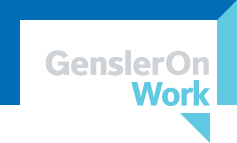Rage Against the Machines?
Image courtesy of DARPA.
Job growth is a leading indicator that Gensler follows closely. Besides predicting the demand for workspace, it speaks to the “animal spirits” flowing through an economy. So when publications like The Economist, the Financial Times and the New York Times recently headlined the negative impact of technology on jobs, it caught my attention.
The coverage focused on two related aspects of “tech automation”—artificial intelligence (AI) and robotics. Lately, both have shown signs of encroaching on human turf, directly threatening jobs that only people could do. Almost half—47 percent—of U.S. jobs could be automated out of existence, Oxford’s Carl Benedikt Frey and Michael Osborne predict. Not even the professions are immune, adds McKinsey’s James Manyika: AI’s ability to tap the latest data and analyze it rapidly will deliver “generally better answers” compared to those of real doctors and lawyers, he believes.
This hints at an increasing tendency to substitute capital for labor in high-wage economies. As MIT economist David Autor notes, robots build cars in Japan, while people build them in India—a relatively low-wage economy. ENR reports a similar trend in construction, with the U.S. following Japan’s lead in introducing robots to the jobsite.
Comparing two revolutionsA working assumption of the tech revolution has been that rising productivity will spill out into the broader economy, generating jobs there even as it spurs employment in the sector. Proponents of this scenario invoke the industrial revolution, but actual history suggests a bumpier ride. Productivity gains from industrialization became widespread in the 1850s—90 years in—while wages and productivity weren’t fully in sync until around 1900. In other words, the workforce didn’t realize the full benefit of industrialization until 140 years after its inception—around the time Henry Ford proposed to pay his workers well enough that they could buy their own products.
No one is arguing that the tech revolution will be this drawn out, but rather that such benefits as job growth and rising wages are by no means assured. As The Economist put it in an article from the January 14 print edition titled “The onrushing wave”:
…technological changes do not affect all workers the same way. Some find that their skills are complementary to new technologies. Others find themselves out of work.
For postindustrial economies—including Singapore, the U.S., and most western European countries—the danger that tech automation poses is a bifurcated workforce, with some benefiting from the shift to higher-value activities and others facing marginal employment or outright joblessness. This is the specter of the tech that “half the jobs automated out of existence” invokes.
Unemployment is a political issue. China’s recent devaluation of the Yuan seeks to preserve the industrial economy generating many of its jobs. Singapore, a postindustrial economy since the 1980s, subsidize education, healthcare, housing and transit to make them available and affordable to lower-wage workers. The shared goal here is to compensate for the market’s “creative destruction” and mitigate its collateral damage.
Looking at the human traits machines can’t easily replicate, The Economist anticipates the growth of “emotional and relational work.” Another possibility is local, bespoke and artisanal production—given wings by social networks and digital marketplaces. Then there’s the tech-enabled “shared” economy: While it threatens businesses that are sources of tax revenue and employment, it could end up generating more of both.
This points back to tech’s liberating promise, which is both to magnify individual efforts and to connect them efficiently to wider audiences, potentially monetizing them. This function—to serve essentially as a better market for products and services—is not new. The pain tech causes in the short run is likely to be offset by the opportunities it creates.
Tools for convivialityA generation ago, the social thinker Ivan Illich wrote about “tools for conviviality,” technology that serves humanity, a convivial species. Too much of tech dehumanizes life, he argued. He didn’t say it, but it’s also a fact that while machines can sell to machines, they're no substitute for human consumers.
That some jobs may be automated out of existence is very likely, but what’s striking about tech is how much of it is focused now on enabling people to find communities and markets. Gensler, for example, uses technology to share ideas and keep them in play, make the delivery of projects and services more effective and sustain the firm as a culture, a community and a profit making organization. Tech is also an enabler.
Our human ability to create and reinvent, often with technology of some sort intimately involved, is our human edge. We’re fallible, but—let’s face it—so are machines. (And our hive mind is superior to theirs.) Despite the risks, it’s a revolution worth having.
 |
John Parman edits Gensler's Dialogue magazine and writes for Arcade and Architect's Newspaper. Contact him at john_parman@gensler.com. |

 John J. Parman
John J. Parman

Reader Comments (2)
I still am the one with a different view on this topic, especially the idea of the "spectre" and the "rage". Long ago I was a fan of the writings of sculptor and author, Jack Burnham, and i was and still am very receptive to his unique views on art, technolgy and the fuutre of systems thinking. I will find that text and catch up with you.
Doug